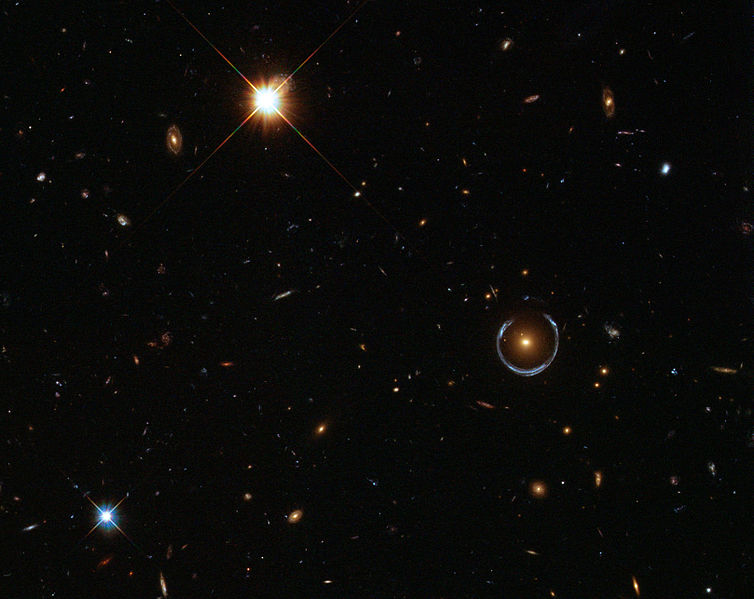Fil:Lensshoe hubble.jpg

Storlek på förhandsvisningen: 754 × 599 pixlar. Andra upplösningar: 302 × 240 pixlar | 604 × 480 pixlar | 966 × 768 pixlar | 1 280 × 1 018 pixlar | 2 560 × 2 035 pixlar | 3 235 × 2 572 pixlar.
Originalfil (3 235 × 2 572 pixlar, filstorlek: 4,99 Mbyte, MIME-typ: image/jpeg)
Filhistorik
Klicka på ett datum/klockslag för att se filen som den såg ut då.
| Datum/Tid | Miniatyrbild | Dimensioner | Användare | Kommentar | |
|---|---|---|---|---|---|
| nuvarande | 21 december 2011 kl. 12.34 |  | 3 235 × 2 572 (4,99 Mbyte) | Bulwersator | {{Information |Description ={{en|1=What's large and blue and can wrap itself around an entire galaxy? A gravitational lens mirage. Pictured above, the gravity of a luminous red galaxy (LRG) has gravitationally distorted the light from a much more dista |
Filanvändning
Följande sida använder den här filen:
Global filanvändning
Följande andra wikier använder denna fil:
- Användande på ar.wiki.x.io
- Användande på cs.wiki.x.io
- Användande på en.wiki.x.io
- Användande på en.wikiquote.org
- Användande på fa.wiki.x.io
- Användande på hu.wiki.x.io
- Användande på hy.wiki.x.io
- Användande på mk.wiki.x.io
- Användande på pa.wiki.x.io
- Användande på pl.wiki.x.io
- Användande på pnb.wiki.x.io
- Användande på pt.wiki.x.io
- Användande på tr.wiki.x.io
- Användande på vi.wiki.x.io

